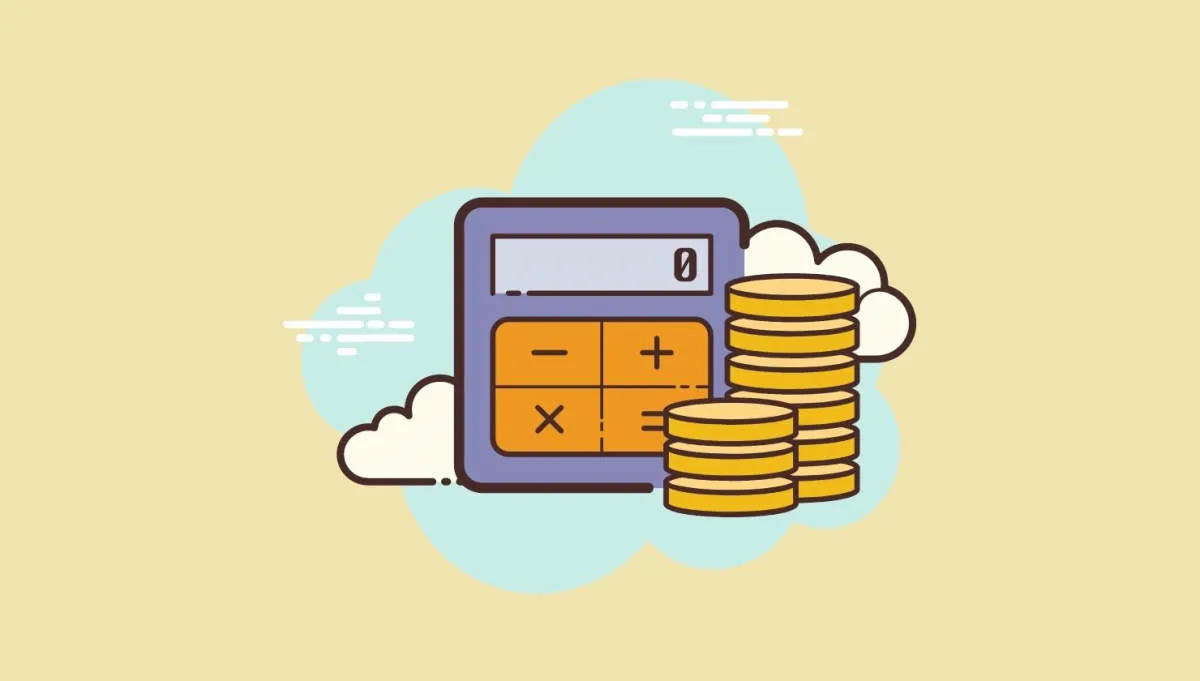Looking to take control of your personal finances? Discover essential tips and strategies to effectively manage your money in our comprehensive guide on successful personal finance management.
Importance of Personal Finance Management
Managing your personal finances effectively is not just about balancing your checkbook; it’s a crucial aspect of life that significantly impacts your present and future well-being. Understanding the importance of personal finance management is the first step towards achieving financial stability and reaching your financial goals.
Here’s why personal finance management is so important:
- Reduces Financial Stress: Perhaps the most immediate benefit is the reduction of financial stress. By tracking your income and expenses, creating a budget, and saving for emergencies, you gain a sense of control over your finances and minimize the anxiety that often comes with uncertainty.
- Achieve Financial Goals: Whether it’s buying a home, starting a business, or retiring comfortably, effective financial management provides a roadmap to reach these goals. By setting clear financial objectives and developing a plan to achieve them, you make your aspirations a reality.
- Avoid Debt and Build a Strong Credit History: Sound financial management practices help you avoid falling into a debt trap. By living within your means and using credit responsibly, you build a strong credit history, which is essential for securing loans with favorable terms in the future.
- Secure Your Future: Retirement might seem distant, but it’s never too early to start planning. By consistently saving and investing wisely, you create a financial safety net for your golden years and ensure a comfortable and secure future.
- Provides Peace of Mind: Knowing that you have a handle on your finances brings a sense of security and peace of mind. You can face unexpected expenses and life’s uncertainties with greater confidence and resilience.
Creating a Budget

A budget is the cornerstone of successful personal finance management. It acts as a roadmap for your money, allowing you to track income and expenses, allocate funds effectively, and reach your financial goals.
Steps to Create a Budget:
- Track Income and Expenses: Begin by monitoring your cash flow. Note down all sources of income, including salaries, wages, investments, and any other earnings. Simultaneously, record all your expenses, categorizing them as essential (rent, utilities, groceries) and non-essential (entertainment, dining out).
- Categorize and Analyze: Organize your expenses into specific categories to understand where your money is going. This analysis helps identify areas of overspending and potential savings opportunities.
- Set Realistic Financial Goals: Determine your short-term and long-term financial objectives. This could include saving for a down payment, paying off debt, investing, or planning for retirement. Having clear goals provides direction for your budget.
- Allocate Funds: Based on your income, expenses, and goals, allocate a specific amount of money to each category. Prioritize essential expenses and align spending with your financial priorities.
- Choose a Budgeting Method: Explore different budgeting methods, such as the 50/30/20 rule (50% needs, 30% wants, 20% savings), the envelope system, or zero-based budgeting, and adopt one that suits your lifestyle and preferences.
- Monitor and Adjust Regularly: Regularly review and adjust your budget. Track your progress, identify any discrepancies between planned and actual spending, and make necessary modifications to stay on track with your financial goals.
Saving for Future Goals
Saving for the future is crucial for financial security and achieving your long-term aspirations. Whether it’s a down payment on a house, your children’s education, or a comfortable retirement, having a solid savings plan is essential.
Identify Your Goals:
Start by defining your financial goals. Are you saving for a specific purchase, like a house or a car? Do you have long-term goals like retirement or your children’s education? Be specific about what you want to achieve and the timeframe for each goal.
Create a Budget:
To save effectively, you need to understand your cash flow. Create a budget to track your income and expenses. Identify areas where you can cut back on spending and redirect those funds towards your savings.
Set Realistic Savings Goals:
While it’s great to aim high, it’s important to set achievable savings goals. Consider your income, expenses, and the time frame for achieving your goals. Start with a smaller amount that you can consistently save and gradually increase it over time.
Automate Your Savings:
Make saving automatic by setting up regular transfers from your checking account to your savings account. This way, you’ll consistently contribute to your savings without having to think about it.
Explore Different Savings Options:
Depending on your goals and time horizon, there are various savings options available, each with its own interest rates and terms. Consider high-yield savings accounts, certificates of deposit (CDs), or retirement accounts like 401(k)s or IRAs.
Review and Adjust Regularly:
Your financial situation and goals may change over time, so it’s essential to review your savings plan regularly. Make adjustments as needed to ensure you stay on track.
Investing Wisely

Investing is a crucial aspect of building long-term wealth and achieving your financial goals. It’s about putting your money to work for you, allowing it to grow over time. Here are some key considerations for investing wisely:
1. Define Your Financial Goals
Before investing, it’s essential to determine your financial goals. Are you saving for retirement, a down payment on a house, your child’s education, or something else? Clearly defining your goals will help you determine your investment timeline and risk tolerance.
2. Understand Your Risk Tolerance
Risk tolerance refers to your ability to withstand fluctuations in the value of your investments. Generally, younger investors with a longer time horizon can afford to take on more risk, while older investors may prefer more conservative investments.
3. Diversify Your Portfolio
Don’t put all your eggs in one basket. Diversification involves spreading your investments across different asset classes, such as stocks, bonds, and real estate. This helps mitigate risk as losses in one area can be offset by gains in another.
4. Start Early and Be Consistent
The power of compounding is a significant advantage of starting your investments early. Even small contributions made consistently over time can grow substantially. Time is your ally in investing.
5. Do Your Research or Seek Professional Advice
Thoroughly research any investment before committing your money. Understand the potential risks and rewards. If you’re unsure, consider seeking advice from a qualified financial advisor who can provide personalized guidance.
6. Monitor and Adjust Regularly
Investing is not a set-it-and-forget-it endeavor. Regularly review your portfolio’s performance and make adjustments as needed. Life circumstances and market conditions change, so your investment strategy should adapt accordingly.
Managing Debt Effectively
Debt is a common aspect of personal finance, but it’s crucial to manage it effectively to maintain financial stability and reach your financial goals. Here’s how:
1. Create a Debt Management Plan
Start by listing all your debts, including balances, interest rates, and minimum payments. This gives you a clear picture of what you owe. Then, prioritize your debts based on interest rates or other factors.
2. Explore Debt Consolidation
If you have multiple debts with high interest rates, consider consolidating them into a single loan with a lower rate. This can simplify your payments and save you money on interest.
3. Negotiate with Creditors
Don’t hesitate to contact your creditors and negotiate lower interest rates or more favorable payment terms. They may be willing to work with you, especially if you’re facing financial difficulties.
4. Focus on High-Interest Debts
Prioritize paying down high-interest debts first. These debts accumulate interest quickly, making them more expensive in the long run. Allocate extra funds to these debts while making minimum payments on others.
5. Avalanche vs. Snowball Method
Consider two popular debt repayment strategies: the avalanche method, where you prioritize debts with the highest interest rates, and the snowball method, where you focus on paying off the smallest debts first for motivation. Choose the method that aligns best with your personality and financial situation.
6. Avoid Taking on More Debt
While managing existing debt, it’s crucial to avoid accumulating new debt. Be mindful of your spending habits and explore alternative solutions before taking on more credit.
7. Seek Professional Advice
If you’re struggling to manage your debt, don’t hesitate to seek help from a financial advisor. They can provide personalized guidance and support in creating a debt management plan tailored to your needs.
Planning for Retirement

Retirement may seem far off, but it’s never too early to start planning. The sooner you begin, the more time you have to build a comfortable nest egg. Here’s what to consider:
Determine Your Retirement Goals
What kind of lifestyle do you envision in retirement? Do you plan to travel, pursue hobbies, or downsize your living arrangements? Defining your goals will help you estimate how much money you’ll need.
Estimate Your Retirement Expenses
Consider your estimated living costs in retirement, including housing, healthcare, food, transportation, and leisure activities. Factor in potential inflation, which can erode your purchasing power over time.
Choose Retirement Savings Plans
Explore employer-sponsored retirement plans like 401(k)s or 403(b)s, especially if they offer employer matching contributions. Individual Retirement Accounts (IRAs) are another valuable option for building retirement savings.
Start Saving Early and Consistently
The power of compound interest is significant, so even small contributions made early on can grow substantially over time. Aim to save a percentage of your income regularly.
Review and Adjust Your Plan Periodically
As you get closer to retirement, review your plan annually or whenever your financial situation changes significantly. Adjust your savings rate, investment strategy, and withdrawal plan as needed.
Protecting Your Assets
Protecting your assets is a crucial aspect of successful personal finance management. It involves taking proactive measures to safeguard your hard-earned wealth from potential risks and unforeseen circumstances. Here are key steps to consider:
1. Insurance Coverage
Adequate insurance coverage is paramount to protecting your assets. Evaluate your needs for various types of insurance, including:
- Health insurance: Protects against exorbitant medical expenses.
- Life insurance: Provides financial security for your dependents in case of your passing.
- Disability insurance: Replaces a portion of your income if you become unable to work.
- Property insurance: Covers your home and belongings against damage or theft.
- Auto insurance: Protects you financially in the event of an accident.
2. Emergency Fund
Establishing an emergency fund is essential to cover unexpected expenses without depleting your assets. Aim for 3-6 months’ worth of living expenses in a readily accessible account.
3. Estate Planning
Estate planning involves creating a plan for the distribution of your assets after your passing. Consult with an attorney to create a will, establish trusts, and designate beneficiaries to ensure your wishes are honored.
4. Asset Diversification
Diversifying your assets helps mitigate risk by spreading investments across different asset classes, such as stocks, bonds, and real estate. This reduces the impact of a decline in any one investment.
5. Cybersecurity Measures
In today’s digital age, protecting your financial information from cyber threats is crucial. Use strong passwords, enable two-factor authentication, and be wary of phishing scams.
Regularly Reviewing Your Finances

Taking control of your personal finances is an ongoing process, not a one-time event. While creating a budget is a crucial first step, it’s equally important to schedule regular reviews to ensure you’re staying on track and adapt to any changes in your circumstances.
Why Review?
Regular financial reviews offer numerous benefits:
- Track Progress: See how far you’ve come towards your financial goals and identify areas where you’re excelling or need adjustments.
- Spot Irregularities: Catch any errors, overspending, or potential financial issues early on.
- Adjust to Life Changes: Incorporate changes in income, expenses, or goals due to life events like job changes, marriage, or having children.
- Optimize Spending: Identify areas where you can cut back on unnecessary expenses and redirect funds towards savings or debt repayment.
How Often Should You Review?
The frequency of your reviews depends on your individual needs and preferences. A good starting point is:
- Monthly: Review your budget, track spending, and check bank statements.
- Quarterly: Analyze your progress toward larger financial goals, assess your savings and investments, and review your credit report.
- Annually: Conduct a comprehensive review of your overall financial situation, update your budget, and adjust your financial plan for the upcoming year.
Making it a Habit
Schedule dedicated time for your financial reviews, just like you would any other important appointment. Use a budgeting app, spreadsheet, or financial software to simplify the process. Remember, consistent financial check-ups are essential for maintaining control and achieving your long-term financial goals.
Conclusion
In conclusion, implementing these tips can greatly improve your personal finance management skills and lead to a more secure financial future.

